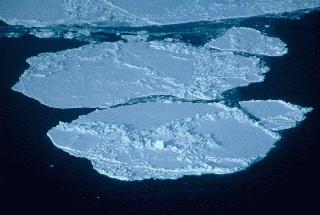
US CIA
The Arctic Ocean
The Arctic Ocean, the smallest of Earth’s five oceans, is located almost entirely within the Arctic Circle in the North Polar Region. The northernmost parts of the European, Asian, and North American continents surround the Arctic Ocean. The ocean is connected to the Pacific Ocean at the Bearing Straight, the waterway between Siberia (Russia) and Alaska (USA). The Arctic Ocean is connected to the Atlantic Ocean at the Greenland Sea, east of Greenland.
A layer of sea ice covers much of the Arctic Ocean for at least part of the year. More sea ice forms in the winter months, until it nearly covers the entire Arctic Ocean. In the summer months, much of the sea ice melts. Because our planet is warming, the amount of sea ice that stays around all year long is decreasing. In fact, at some point within the next few decades there will likely be no sea ice during summer in the Arctic Ocean.
Marine life in the Arctic Ocean include a few large mammals such as walruses and whales, as well as smaller animals such as fish, species of invertebrate animals that live in the water and on the ocean floor, and tons of phytoplankton. Phytoplankton, tiny marine plants, are the primary producers that start most marine food chains. During the summer, when the days are very long, these plants can photosynthesize for long periods of time and they reproduce quickly. In winter, phytoplankton struggle to get enough sunlight to survive. There are species of algae and small animals that live within the sea ice and small animals live on the underside of the sea ice. There is still much that is not known about the diversity of organisms that live within and under the Arctic sea ice.














